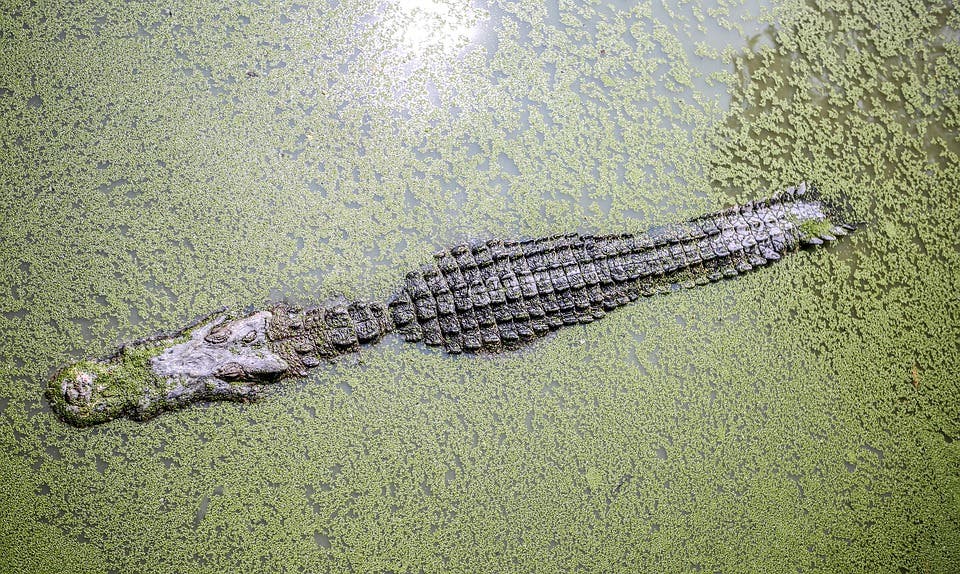Some crocodile species are vegetarians — but also extinct.

A study on fossilized teeth revealed that several ancient groups of crocodyliforms, the lineage that includes crocodiles and alligators, were not carnivores at all; in fact, they were vegetarians. The team reports that at least three (but potentially up to six) different species have relied on a plant-based diet in the past. They all are now extinct.
Mean green veggie machine
“The most interesting thing we discovered was how frequently it seems extinct crocodyliforms ate plants,” said Keegan Melstrom, a doctoral student at the University of Utah. “Our study indicates that complexly-shaped teeth, which we infer to indicate herbivory, appear in the extinct relatives of crocodiles at least three times and maybe as many as six.”
All crocodilians living today share the same general body shape, ecology, and live their lives as generalist, semi-aquatic carnivores. Being carnivores, their teeth are relatively simple, conical implements used to rip and tear through flesh and not much else. Melstrom and his graduate advisor, Randall Irmis, chief curator of the Natural History Museum of Utah, compared the tooth complexity of extinct and living crocodyliforms using a method originally developed for use in living mammals. Overall, they measured 146 teeth from 16 different species of extinct crocodyliforms.
It quickly became clear that the extinct species showed a different pattern of tooth structure. Some species showed multiple specializations that are not seen in living species today, including a feature known as heterodonty: regionalized differences in tooth size or shape.
“Carnivores possess simple teeth whereas herbivores have much more complex teeth,” Melstrom explained. “Omnivores, organisms that eat both plant and animal material, fall somewhere in between. Part of my earlier research showed that this pattern holds in living reptiles that have teeth, such as crocodilians and lizards.”
“So these results told us that the basic pattern between diet and teeth is found in both mammals and reptiles, despite very different tooth shapes, and is applicable to extinct reptiles.”
Through measurements of dental measurements and those of other morphological features, the team reconstructed the diets of the extinct crocodyliforms. The results suggest that these species had a wider range of dental complexity — and thus diet too — than previously estimated.
Plant-eating crocodyliforms popped up quite early in the group’s evolutionary history, the team explains, just after the mass extinction at the end of the Triassic. These species lived up until the end of the Cretaceous, when the dinosaur mass extinction occurred. The team’s analysis shows plant-eating species developed at least three times, possibly up to six times, during the Mesozoic.
“Our work demonstrates that extinct crocodyliforms had an incredibly varied diet,” Melstrom said. “Some were similar to living crocodilians and were primarily carnivorous, others were omnivores and still others likely specialized in plants.”
“The herbivores lived on different continents at different times, some alongside mammals and mammal relatives, and others did not. This suggests that an herbivorous crocodyliform was successful in a variety of environments!”
Their work is not yet done, however. Some fossil crocodyliforms are missing teeth and, armed with the knowledge of the present study, Melstrom plans to reconstruct their diets as well. He also wants to find out why these extinct crocodiles diversified so radically after one mass extinction but not another, and whether dietary ecology could have played a role.
The paper “Repeated Evolution of Herbivorous Crocodyliforms during the Age of Dinosaurs” has been published in the journal Current Biology.


